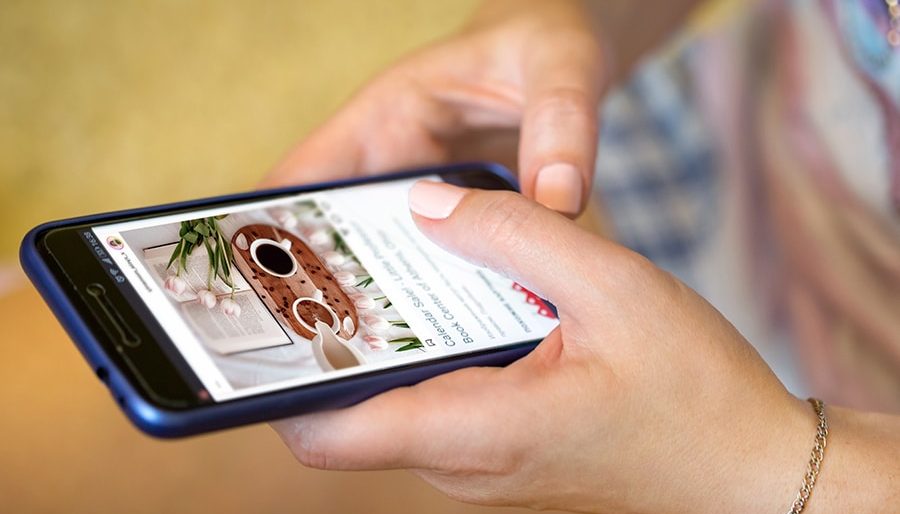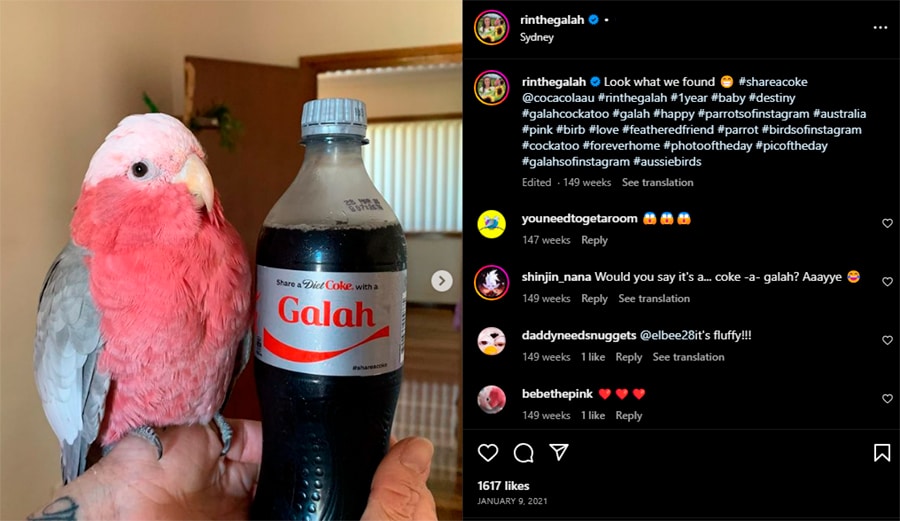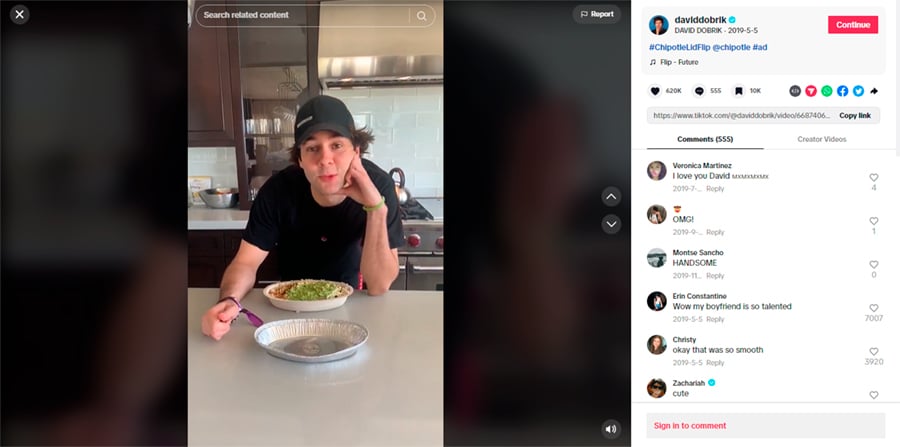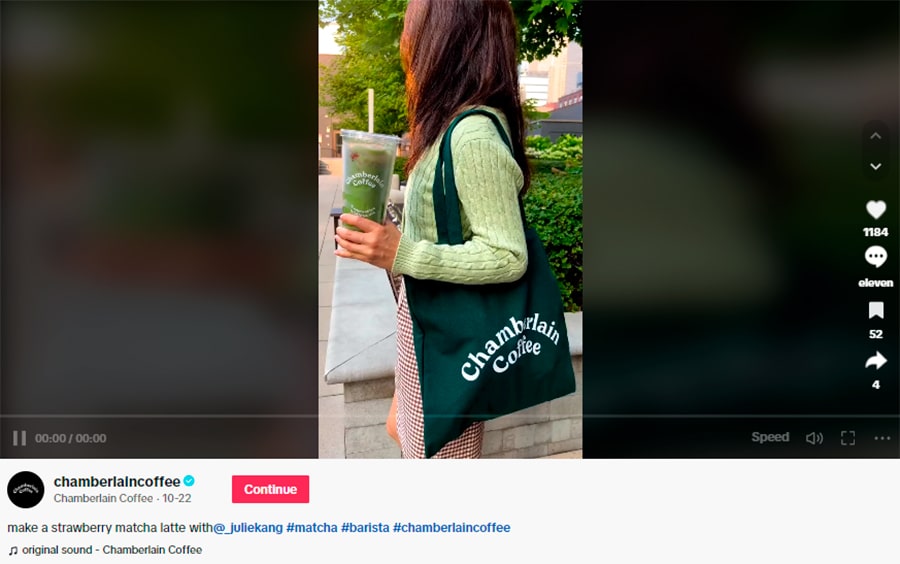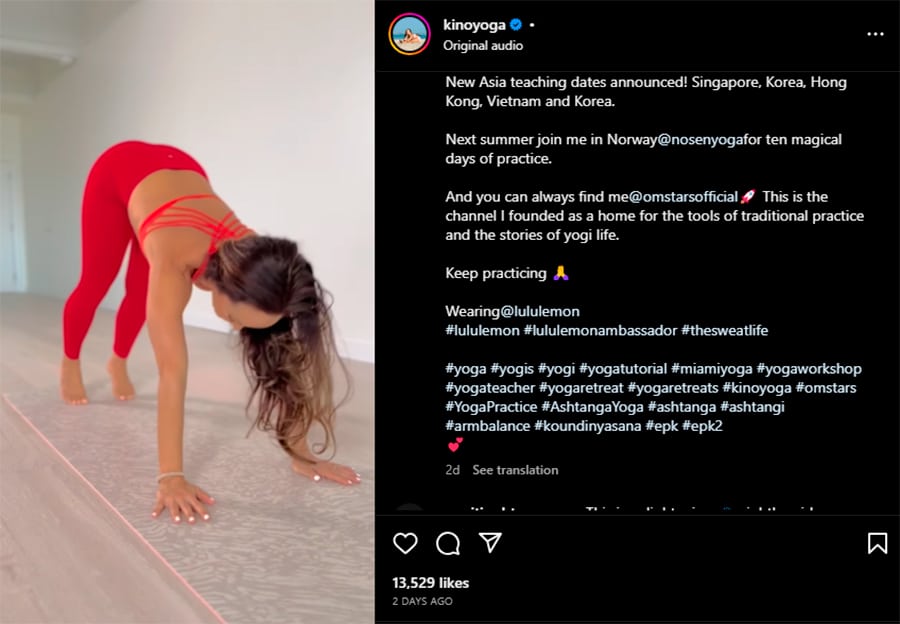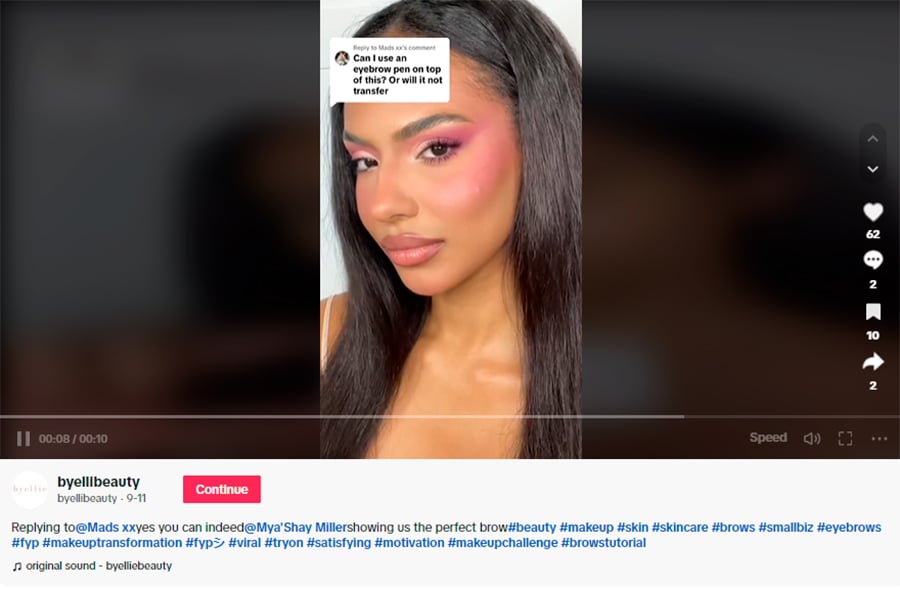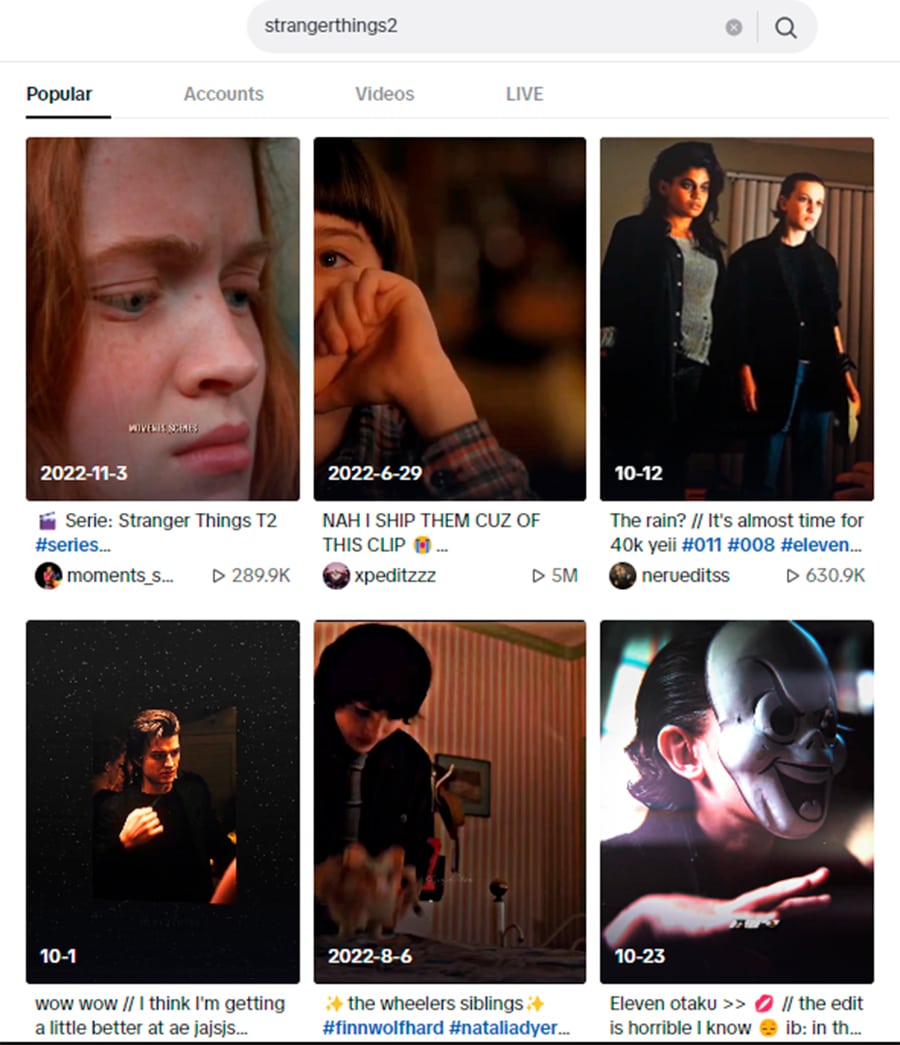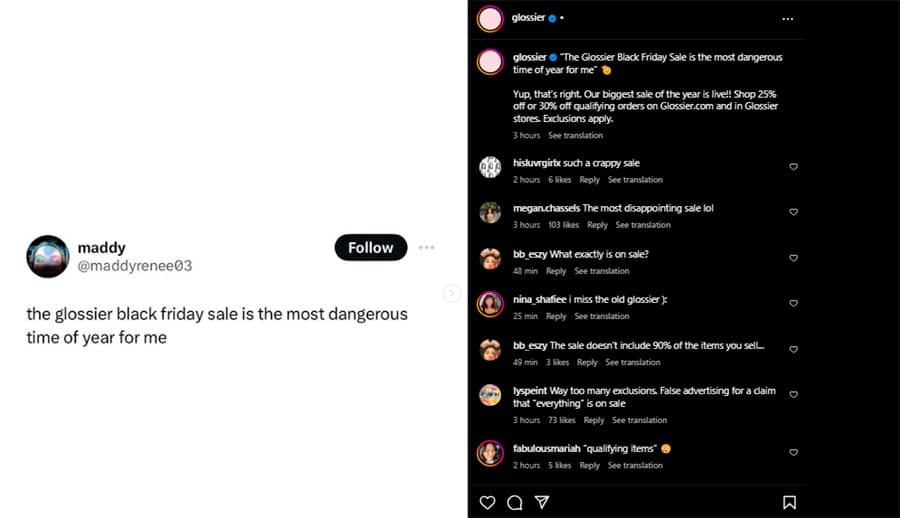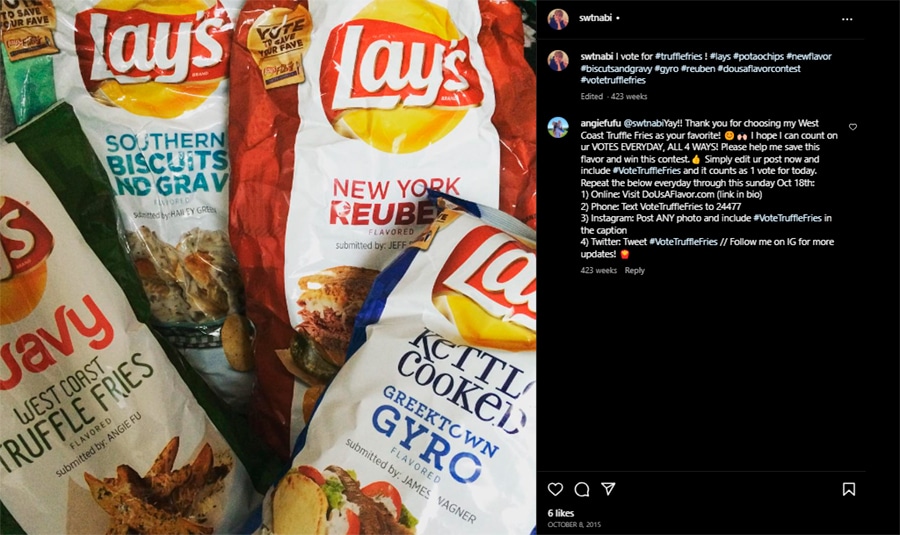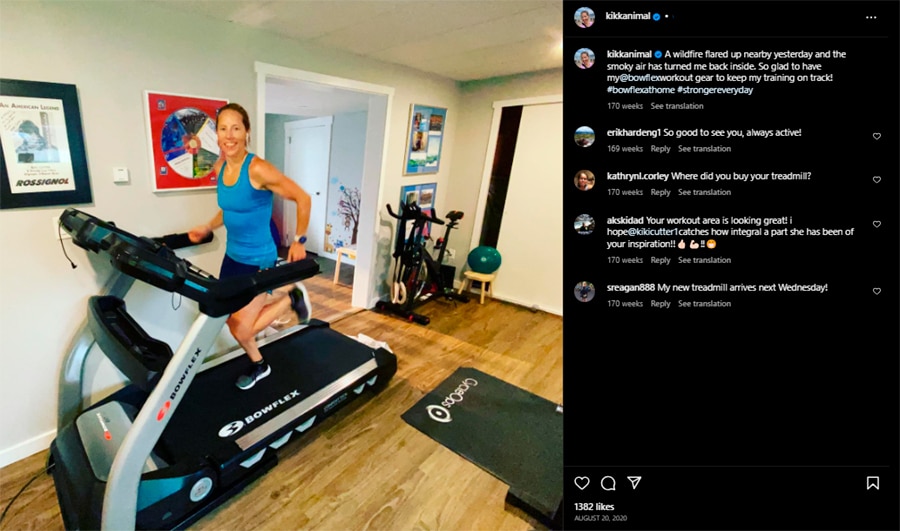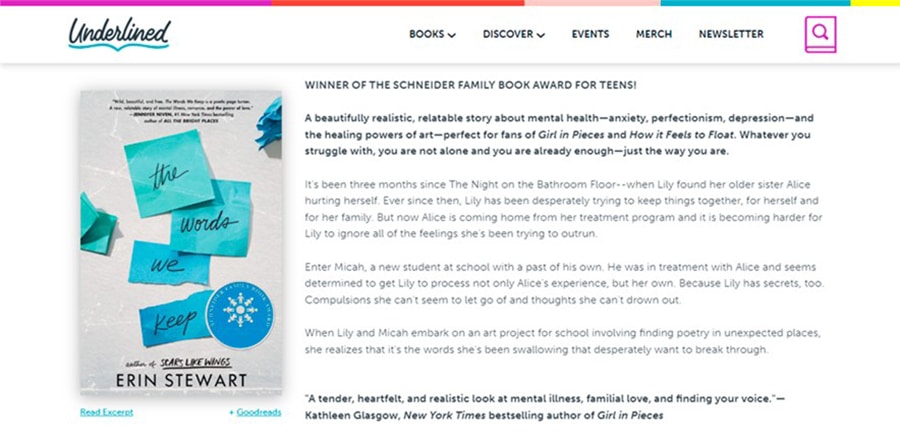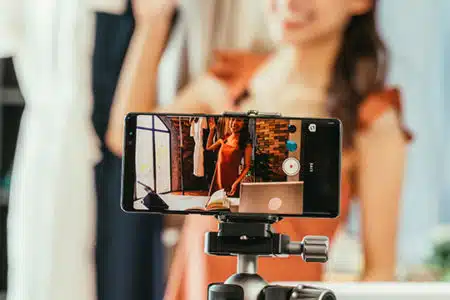Table of Contents
Best 10 UGC Campaign Examples (Key Takeaways on How to Develop One!)

Customers’ trust in companies has been declining progressively for years. Thanks to the internet and social media, advertisers can display their products every hour of the day, which led to audiences being more aware of their persuasion tactics. That’s why companies are in dire need of new ways to engage and convert their targets, and luckily, a UGC campaign can help with that.
In this article, I’ll dive into the details of USG content marketing, exploring why it matters for any type of business. Additionally, I’ll analyze 10 effective campaigns, going over what they did to capture and engage the public, boost awareness for their brands, and help build valuable customer relationships, so you can learn from the best.
What Is a UGC Campaign?
User-generated content, or UGC, refers to any type of content that consumers have produced about a brand and posted online on their own profiles. This can take many different forms, like social media posts with images and videos or an interesting blog article reviewing your product. What makes it different from other similar tactics, like influencer marketing, is that brands don’t pay for it.
Instead, USG content is generated organically by users who want to share their genuine and honest thoughts about a brand. Because people are more likely to trust the opinions of others than the word of a company when making purchases, it can be an effective marketing strategy to turn your audience into paying customers.
For a well-known brand with a huge presence online, content from users may come naturally. However, if you’re a small business without much exposure, you need a well-thought-out campaign.
A UGC campaign allows you to set a path to follow in order to encourage customers, followers, and the general public to create and share information about you consistently. Additionally, planning your actions with premeditation allows you to set a series of measurable objectives you can go over later and decide if your actions were worthwhile or not.
Top 10 UGC Campaign Examples to Learn From
Considering that leveraging USG content is such a recent marketing technique, it can be hard to find reliable resources and useful advice on how to develop a campaign for your business. That’s why we appeal to real-life examples, so let’s see what that looks like in practice:
1. Share a Coca-Cola – Know How Your Audience Acts
Although USG content marketing might seem like a recent development, it has actually been around for quite some time. A well-known example is Coca-Cola’s “Share a Coca-Cola” campaign from 2011. To improve sales, the company decided to sell bottles with common male and female names printed on the label, and encouraged customers to post pictures about them on social media platforms using the hashtag #ShareaCoke.
According to the brand, more than 150 million personalized bottles were sold, and their hashtag had 998 million impressions on X (former Twitter). Bear in mind that this campaign took place during the early stages of social media, when few brands had a presence online, and interacting with one was new and exciting.
Nevertheless, the heart of a UGC campaign lies in understanding your audience and their willingness to participate in the prompt you send them. Here, Coca-Cola also owes its success to seeing that this personalized experience would be exciting and thrilling enough to consumers that they would want to share it with others online. While, today, this might be difficult to achieve, it’s still possible to offer a unique and tailored experience.
2. Chipotle – Challenge Your Audience
In 2019, the food franchise Chipotle wanted to drive interest in their app and improve sales, so they came up with the “Lid Flip Challenge,” a user-generated campaign that dared their followers to find new ways to assemble a burrito bowl. To participate, all they had to do was record themselves and share it through the company’s new app. In just the first six days, over 111,000 videos were shared.
Challenging your followers can be a great way to encourage them to share content—after all, we’re all a little bit competitive on the inside. However, if the task you set for them is too difficult, followers won’t feel competent enough to take part in it. The Lid Flip Challenge was perfect because it captivated customers while offering a simple, but interesting task.
Flipping a burrito may have been a bit harder than it looked, but in most cases, fans ended up with a funny video that they were eager to share online.
3. Chamberlain Coffee – Let Your Follower’s Personality Shine
There’s nothing more personal than coffee: be it two and a half tablespoons of sugar or half a cup of milk, we all have our favorite recipes. Chamberlain Coffee, a beverage brand founded by popular YouTube creator Emma Chamberlain, knew that very well.
When users started making their own combinations of their coffee and tea blends and sharing them online, the brand decided to repost this USG content on their channels with the hashtag #barista. Showcasing real customers putting their creativity into preparing and styling the company’s products turned out to be the perfect way to display their varied portfolio of hot and cold beverages.
Additionally, each UGC piece was able to convey the product’s unique personality through the eyes of their customers, which helped inspire potential targets to try it out while making their products more relatable.
4. Lululemon – Follow Up with an Event
Another example of a great UGC campaign on social media is Lululemon’s #TheSweatLife. The goal was to encourage customers to publish photos of themselves wearing the brand’s gear on Instagram while “sweating in their products.” It was so successful that #TheSweatLife was tagged in over 7,000 photos and videos through Instagram and X, resulting in over 40,000 new visitors to their website.
But the story doesn’t end here! Seeing the effects of this campaign, Lululemon decided to host an event, setting up studios with yoga teachers and experts in the field for their followers to enjoy. Needless to say, it was a success.
A user generated campaign aims to engage your customers, so they’re naturally captivating. It’s important to keep an eye on what’s happening with your campaigns and capitalize on that attention, like Lululemon did. Not only will it help you increase sales, but it can also contribute to building loyalty and strengthen the community around your brand.
5. ByEllie Beauty – Give Customers a ShoutOut
Who says small businesses can’t make the most of UGC campaigns as well? Take a look at ByEllie Beauty, a small make-up brand from the UK that made its brow shape viral with a user generated campaign.
After launching a new ultra-resistant brow shape, ByEllie Beauty noticed that customers were testing their product’s durability and sharing it online. So, to encourage this USG content, they started reposting videos on their channels and recording answers to their fans.
This motivated more customers to get involved for the chance of a shoutout, building buzz around the brand, and making the product go viral. ByEllie Beauty experienced an incredible increase in sales, but more importantly, by interacting with UGC, they gained a recognizable presence among customers and built a community, which is crucial to a small business’s online growth.
6. Stranger Things 2 – Give Customers What They Want
For the launch of Stranger Things’s second season, Netflix decided to promote it and increase interaction with a campaign that invited fans to transform themselves into one of the show’s characters. All they had to do was upload a snapshot of their face to uPic, and they could scale, spin, change the brightness, and add filters to their photo to ensure they matched the show’s atmosphere.
Later, they could share their themed selfies on their social media accounts, which Netflix reposted. In just two weeks, the streaming company gained 125,000 new followers. What made this campaign so successful is that it allowed viewers to picture themselves as part of the show.
Securing your customer’s participation in a UGC campaign can be one of the hardest parts of the process, so it’s important to understand their needs and desires. Any Netflix lover’s dream is to find themselves inside their favorite TV show, making this offer truly appealing to them.
7. Glossier – Humanize the Brand
If you haven’t gotten the memo yet, the most successful Gen Z brands are the ones that constantly make use of customer-submitted imagery to share information about their products and bond with their customers. On that note, we can find another successful content marketing example by Glossier, a beauty brand that regularly posts pictures of people using its products.
For the launch of their Mega Greens Galaxy masks, they encouraged fans to share their photos wearing the product with the #MaskForce hashtag. Glossier then reposted those photos, filling their Instagram feed with images of real customers instead of models or professionally produced product shots.
Not only did this cause even greater engagement among its users, but it also helped them humanize their company. Moreover, Glossier’s brand promise is to offer affordable skincare that helps customers gain confidence and bring out their inner beauty. So, by showcasing real people using their product they were able to support that while inspiring viewers to give their new masks a chance.
8. Lays – Display the Outcome of Your Audience’s Participation
If constant innovation is a challenge for you (which, let’s be honest, it often is), you can appeal to your customer’s creativity for ideas. This is what Lays did with the #DoUsAFlavor contest, where they asked consumers to list three ingredients that would make the perfect Lays flavor.
A panel of judges picked three from all the submissions, and then Lays asked for the audience’s involvement once more to vote for the final winning flavor via X, Facebook, and text messages. Besides increasing fan engagement, this campaign gave great exposure to their new product, so when it hit the shelves of supermarkets all over the country, those who participated were eager to try it.
Successful UGC campaigns go beyond just asking users to interact; they invite people to put their grain of sand into creating something new and original alongside the brand. Here, Lays involved their fans throughout the entire process of developing a new product, and afterward, they let them enjoy the results of their efforts, making them truly feel like they’re part of something bigger.
9. Bowflex – Collaborate with Influencers
Another company nailing USG content is Bowflex, a leading fitness equipment business that experienced huge growth in sales during the 2020 pandemic. However, as customers started leaving their homes, the brand was afraid of declining numbers, so they came up with the “#BowflexAtHome” campaign.
The company reached out to 25 influencers, offering them free products to host a giveaway with their followings, with the only condition that they had to tag the brand and use the #BowflexAtHome hashtag. In total, there were 45,348 giveaway entries, and the brand managed to reach 7.9 million followers on Instagram.
The content distribution strategy you choose is important for your UGC campaign. What made this one was how Bowflex decided to get its message out through a third party, which helped establish the company as a relevant brand, while strengthening its bonds with influencers and collaborators.
10. Penguin Random House – Create a Community
In 2018, Penguin Random House saw a growing phenomenon with keen eyes: people were writing stories based on their books. Instead of taking these fan works down, the company developed Figment, a branded community catered towards teenagers who love to read and write fan fiction.
When it first started, the community had over 300,000 members who could create, share, and moderate content. By encouraging the development of fan content instead of banning it, PRH created a safe space for people who have a passion for books and love talking about them with others, encouraging new people who share those interests to join.
Years later, when the website was shut down, fans were devastated. Luckily, PRH kept a close eye on their customers’ wishes and created Underlined, a new site with the same approach.
Wrapping Up
As customers grow more and more skeptical of brands, a well-thought-out user-generated content campaign may be what you need to attract and captivate them with your product. This new marketing technique is bustling with opportunities and challenges; however, the resulting onslaught of content can be overwhelming without the proper approach.
By planning how to attract customers and what to do with the USG content you receive, you’ll be able to make the most of this practice. This can be crucial to giving your brand helpful exposure, especially among younger audiences.
